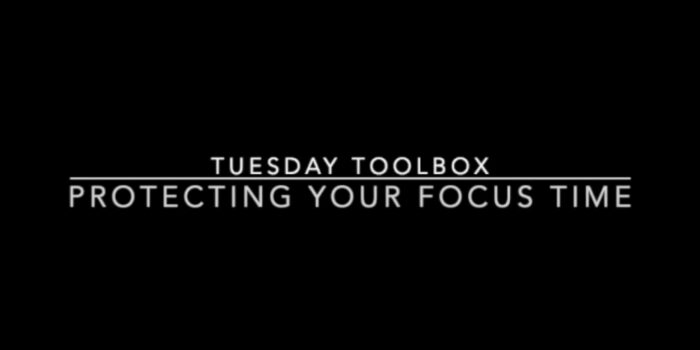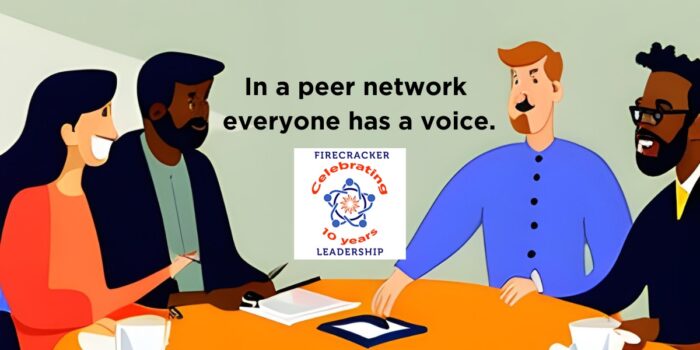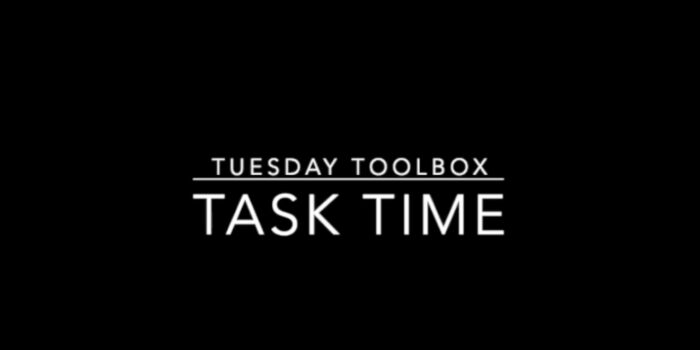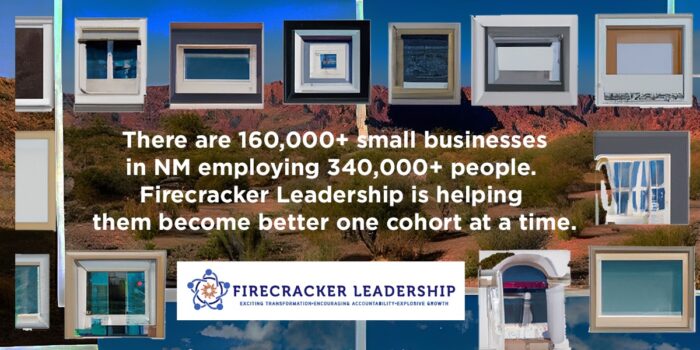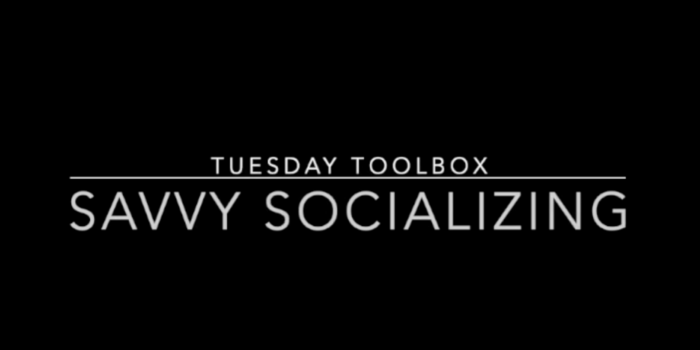Quick: What’s the most consistent way to predict a company’s ability to produce total shareholder return that outperforms rivals and the market, no matter the economic conditions? Is it consecutive quarters of beating analyst estimates? Patents per employee? A high score on Glassdoor?
The answer, as you undoubtedly know already, is: None of the above.
It’s actually your Net Promoter Score (NPS), the simple, 1-10 rating system that asks your customers how likely they are to recommend your company to someone else.
NPS, developed by Bain fellow Fred Reichheld, has become the gold standard in measuring how your customers feel about you, and nailing it is hardly an academic exercise. Over 30 years and across a slew of best-selling books, including The Loyalty Effect, Loyalty Rules! and The Ultimate Question: Driving Good Profits and True Growth, Reichheld has shown a powerful correlation between NPS and financial performance. An index he developed full of high-NPS companies like Apple, Costco, Intuit and others has continually trounced the total market for total shareholder return over more than a decade. High NPS, Reichheld argues, is a great—and certainly the clearest—predictor of market success.
Still, Reichheld argues that for CEOs, board members and investors, NPS doesn’t go nearly far enough in determining whether a company is truly building lasting relationships with the people who pay the bills, and it’s not enough to develop useful business strategy—especially in a time of mounting economic headwinds.
So last year he released a groundbreaking new book: Winning On Purpose: The Unbeatable Strategy of Loving Customers. In it, he introduces a new “customer-based accounting” metric that allows companies to quantify (to an auditable standard) the strength of the relationships between a company and its customers. He calls it Earned Growth Rate, or EGR.
“It just says a healthy business has to have a lot of growth baked into it from its existing core customers who are going to come back for more, buy more stuff and refer their friends,” says Reichheld. “Earned growth is an accounting measure of that. Every boardroom should have that front and center.”
Corporate Board Member talked to Reichheld about EGR and more: how to tell good profits from bad, how to make your board far more customer-focused and why loving customers—he means it—is the most essential thing any company can do today. What follows has been edited for length and clarity.
When we’re kids and we run lemonade stands, we learn it’s all about the customer. What happens? Are you surprised that the customer isn’t more the focus of conversation in many businesses?
When businesses are small, they can’t succeed unless they treat customers right, and it’s very apparent that only when customers come back for more and refer their friends that that’s the flywheel that drives all success. But as they get bigger, there’s this transition to seeing the world through an accountant’s lens, because that’s how we measure progress. Small and medium businesses, they just use accounting to get their taxes paid. Accounting doesn’t drive their decision-making.
But as you get larger, companies actually have their whole reality frame through accounting results because those are the only reliable ones. They’re constant around the world, they’re audited, people go to jail if they cheat. By the time you get to be a big public company, my goodness, that takes up 90 percent of your awareness as a board member.
When I go to public company board meetings as a director, 90 percent of our time is looking at accounting. Accounting is great for some things, but it is completely blind to this core idea that customers coming back for more and bringing their friends is the key to our future.
One of your focuses is on trying to make sure that what you call “consumer capitalism” is a bigger part of board conversations. What do you mean by consumer capitalism? And how do boards get smarter and more involved with it?
I think a little bit back to the days when Copernicus and Galileo were putting their life on the line by saying that the Sun is the center of the solar system, not the Earth. There was this large contingent of traditionalists, whose mindframe—and probably their mental health—was based on the idea the Earth was the center of the solar system. Well, we’re now in a similar position for most businesses, because they see the world through accounting lenses that the profit or maybe even shareholder value is the center of the business solar system.
That profit-centric governance and logic and prioritization is everywhere. The notion that customers are the center of why a business exists and the customer is the primary asset because the customer provides all cash flow, you can’t see that through accounting numbers. It obfuscates it.
In some ways, this is just stripping away the fabric that hides the truth of a business. A board of directors listens to the audit committee for most of the time we’re there. You get coached on how you’ll go to jail if you don’t have Sarbanes-Oxley stuff lined up. And these are reasonable ideas, but they’re not the core. Are we treating customers well? Are we delighting them? That’s the health of the business. When you go through all the risks that you have to sign off on every year, they ignore the real core one: We’re not going to be innovating enough remarkable stuff to keep our customers loyal. That’s the true risk facing the business, and we don’t even measure it.
We’re in a “stakeholder capitalism” world, where there are a million ESG metrics and so much conversation and proposed regulation around that. Put consumer capitalism into the landscape of the stakeholder capitalism and ESG movements.
Getting metrics to be a science takes huge work. Then you have to audit them because the instant you have a metric as an outcome that you want to flaunt for your investment public or your customers, like a lot of ESG, there’s just a real tendency to look for the statistic that makes you look best.
I see all of these well-intentioned ideas. Who can argue against good governance or making the environment a better place or being a great place to work? But nobody can agree on the right metrics, and therefore, it’s chaos. Scott Cook, the founder of Intuit, would say that a man with one watch knows what time it is. A man with two watches is never quite sure. And I would add, a man with a dozen watches—ESG and DEI and all these watches—is always trying to figure out which watch makes him look best and isn’t spending much time on actually creating value for this core constituency, which is the customer.
So, while as a person I want all of these good outcomes, I think the world has taken its eye off the central idea that loving customers is the only way to prosper and become a great place to work or to provide true long-term returns to your investors.
That’s one of the big things in your work. You say that not only do the companies who score highly in NPS radically outperform the total market and do so over a decade, but that they do so with inherently less risk. Talk a little bit about what you call good profits and bad profits, and how you de-risk a business by becoming more customer-focused.
Good profits are the profits you earn from customers who love you and want to do more business and bring their friends. And bad profits are the things you do to customers that make them become detractors and look for other alternatives. A bad, great, classic bad profit in my mind is marking up gasoline refills for rental cars 300 percent and 400 percent. It has nothing to do with the cost you incur—it’s a trick and a trap that you can sort of nick people when they’re vulnerable.
That’s exactly like the mobile phone companies. Every customer hated that long contract and the roaming fees and all the tricks and traps that are in there. Then T-Mobile came along and cleaned that out. They got rid of roaming fees, they got rid of those long contracts. They got rid of the bad profits, and T-Mobile just crushed it. Their shareholders are the happiest in the industry.
So, we went down this path and said, “Well, I wonder if the company with the highest NPS measured correctly.” Because at Bain we started measuring NPS as a science—it is called NPS Prism. And on an apples-to-apples basis, it looks at the NPS of each company and in a vertical at like mobile phone or like credit card, like automobile sales. We found that the company with the highest NPS scientifically measured was indeed not only growing faster and more profitably, but they had delivered the highest total shareholder return across the entire industry.
And maybe an even more radical insight, only those NPS leaders were achieving better than a Vanguard Total Index Fund return. Why would I invest in an individual company stock unless it outperformed what I could get with a more diversified and lower-risk portfolio investment? The answer is, you wouldn’t, only an idiot would do that. You haven’t created real value as a board or a CEO for an investor unless you outperform that index. The only companies outperforming that index consistently are the ones with superior NPS, which means there’s only one sustainable way to deliver a long-term value to investors. And that’s this flywheel of customers coming back for more and referring their friends.
So how do you get boards get better at this? What do the boards who are good at this do differently than other boards?
They always put things in the context of what’s in it for the customer. If we’re not making decisions that ultimately are going to enable our teams to innovate and be remarkable for the customer and get that flywheel going, we’re missing the point. Big bureaucratic companies will get into a compliance thing. Companies like Costco, Intuit and others, they’re wise enough to see, no, the customer is at the center, and we need to focus our energy on delighting customers.
Now, NPS was a really nice way of shining light on the health of the customer flywheel. But when you start going down the path of, so now we’re going to link into people’s bonuses and we’re going to make it a KPI, you destroy its clarity, because now people are out there begging for 10s and finding ways to manipulate the system so they make their bonus, as opposed to it’s just a passive light that helps you see how well you’re loving your customers.


To deal with that, I came up with a statistic we call Earned Growth. Earned Growth is just the accounting twin of Net Promoter. It just says a healthy business has to have a lot of growth baked into it from its existing core customers who are going to come back for more, buy more stuff and refer their friends. Earned Growth is an accounting measure of that. Every boardroom should have that front and center.
Let’s talk a little bit about what Earned Growth. What’s it comprised of? And how do you start dealing with it as a way to develop strategy?
When I started this journey and wrote The Loyalty Effect almost 30 years ago, we looked at retention rate. You know, customers coming back for more—you could measure that. It was a signal of the health of the business. The economics are quite surprising. That’s the part of that book that caught people’s attention, the compound interest mathematics that cumulate into remarkable improvements. You increase your customer retention rate five points and you can double the value of the business.
But it’s not quite right; it’s insufficient. Retention comes too late—someone’s left. It’s a little bit late to fix that or learn from it. So, I went off to Net Promoter as the real-time way to see: Are they feeling the love right now?
I probably should have put something in the middle. Net revenue retention is a better way to measure retention rates. It just weights customer retention by revenues. So, from our customers last year, how much revenue did we get from them compared to that previous period? And that takes into account their dollar growth, the detractors, the shrinkers, everything put together. Net revenue retention is a really powerful statistic. And it’s not reported by most companies. SaaS companies, they do, but other businesses, it’s a little bit tricky, and I haven’t figured it out, and the accountants don’t make me do it. So, I don’t know what it is.
Net revenue retention is the guts of Earned Growth. But then there’s one other component. When you love your customers and turn them into fans, into promoters, they refer you to friends. And most businesses have no way of measuring referrals. How many of the new customers are coming in primarily as a result of word of mouth and referral versus being bought by sales commissions and marketing promotions and gimmicks? That’s more than a subtlety. That’s the core of whether you are succeeding with your business. Net revenue retention plus earned new customers is the math behind Earned Growth Rate.
Arm us with some smarter questions to help us understand if management is really getting this right, is really focused enough on the customer. What should we be looking for? How do we govern a company to make sure it’s more customer-centric?
A smart board member would say, “Listen, I want to know the three things we’re doing this year that will make more customers love us, that are really remarkable and can be hard for our competitors to match and some evidence that they really are special.
“I want to know what our net revenue retention rate is, how that compares to previous years, and how it compares to the net revenue retention at our top competitors. I want to know, of all the business that’s coming in in new customers, how much of it is coming in primarily on referral?” Those are the kinds of things that I would dig into.
What’s the role of technology in all this? We talked about small businesses being much more customer-focused—technology allows big businesses in some ways to act like small businesses and get to know customers at a much more one-to-one level. How should board members be thinking about technology to become better customer-centric companies?
The digital revolution provides just an astonishing set of possibilities to delight customers efficiently. But most of the technology investments I’m seeing are really cost reduction in disguise, because it costs less to have self-service and to get rid of the human process steps. Much less of it is “What am I doing to delight the customer?”
I read about, “Oh, we’ve got all this great AI and machine learning,” but then you look at the objective function underneath what the thing’s learning how to do, and it’s learning how to sell you more stuff that you don’t need or charge higher prices, like the car dealer who never wants to leave any money on the table in a negotiation. Most people hate dealing with car dealers. Well, now, people are thinking, “I’ve got the digital tools, so I can do the car dealer thing with all my customers and make sure they’re paying the highest possible price.”
Well, that’s bad profits because actually, when customers understand that, they don’t trust you anymore, and they feel like your objective is to extract maximum value from their wallets.
Whereas great companies, their customers feel like, this company is committed to giving them the absolute best value they can afford to. Anybody who’s always trying to maximize profit at every customer interaction, that’s a horrible company. This is where digital technology is not really acting in a customer’s best interest too often.
You use the word love a great deal when you talk about customers. Why? And what does that actually mean in this context?
I never used to use the word love. Read my books over the years. I didn’t use love until this last book, because I finally figured out [success is] the reward for loving customers. It’s when customers feel the love that they know that you’re going to treat them right. They are confident you’re not going to hit them when they’re vulnerable and go with the tricks and the traps. That’s loving behavior and they give you loyalty in return. That set of words, I think, is appropriate.
At the core, this idea of love is that in a relationship, when the real happiness in your partner is what drives most of your prosperity, when that relationship is so important to you, that’s a good way to think about love. And it gets back to sort of the religious idea: Love thy neighbor as thyself, or treat people the way you’d want to be treated. Everybody knows on a personal basis that is the right way to build relationships.
It works in business, too. Go through a thought experiment: Would I rather do business with a company who actually treats me with love and care and never abuses my trust, is always looking for ways to make my life better and solve my problems and is never going to take an inappropriate profit margin? Of course. I mean, any sane person is looking for that. They might think: I’ll never find that in the business world. But increasingly they do find it, and they find it in companies like Costco. They find it in Discover Card. They’re finding it in Subaru—their whole philosophy is based on love. I didn’t know that until I started studying them because they had the highest NPS of the traditional car companies. But I also didn’t really pay attention. They also have the highest total shareholder return over the last decade.
These companies, who you discover really treat people with love and care, that’s who you recommend to a friend. You don’t recommend a company to a friend if it’s a business that pollutes the environment or abuses its employees or cheats on its taxes.
When you recommend to a friend, that’s a high standard. It’s not only just good value, it’s good people. And a referral itself is an act of love, because they’re not bribing you to refer them to your friend. You’ve had a great experience; your life has been enriched. You want to share that with someone you care about, a friend, a colleague, a family member. It’s this cycle of love that reflects itself in wonderful financial outcomes. So love comes first, financials come later.
But they come if you get the first part right?
When your customers are coming back for more and referring their friends, you don’t have to be remarkably bright in a commercial sense to turn that into a barn-burning success. It creates so much excess value that small improvements that accumulate through the years create just a flood of opportunity. When your customers trust you and they’re referring their friends, they’re giving you feedback on how to get better. They’re trusting you with their deepest problems and vulnerabilities because they know you won’t take advantage of them.
That becomes a great place to work, because good employees want to be in a community where they get recognized and rewarded for enriching the lives they touch.
When I was growing up, I thought that would be make-believe. What a utopia it would be if I could work at a company where my responsibility was to sustainably enrich the lives of people and make their lives better. Wouldn’t it be wonderful if the world worked that way? Well, it does work that way, but it takes strong leaders who have this customer-centric mentality to make it a reality.
DAN BIGMAN

